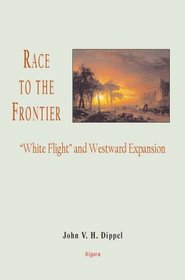Search -
Race to the Frontier: "White Flight" And Western Expansion
Race to the Frontier White Flight And Western Expansion
Author:
Race relations were an important driving force in the move to settle the West, as the political records and personal accounts show. Race to the Frontier provides an analysis of this little-discussed but essential facet of American history. — Why did so many thousands of settlers pull up stakes and undertake the arduous journey to the frontier in ... more »
Author:
Race relations were an important driving force in the move to settle the West, as the political records and personal accounts show. Race to the Frontier provides an analysis of this little-discussed but essential facet of American history. — Why did so many thousands of settlers pull up stakes and undertake the arduous journey to the frontier in ... more »
ISBN-13: 9780875864228
ISBN-10: 0875864228
Publication Date: 10/31/2005
Pages: 337
Rating: ?
ISBN-10: 0875864228
Publication Date: 10/31/2005
Pages: 337
Rating: ?
0 stars, based on 0 rating
Genres:
- History >> Americas >> United States >> 19th Century >> Old West
- History >> World >> 19th Century
- History >> World >> General




